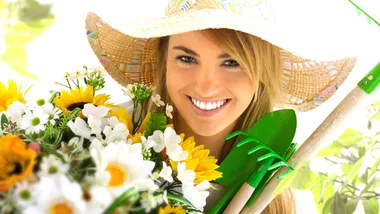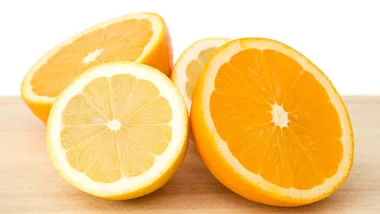**”Daisy, Daisy, give me your answer do.
I’m half-crazy, all for the love of you”
— ‘Daisy Bell’ by Harry Dacre.**
If I were to choose one bush that would give flowers for most of the year, or even all year round in frost-free climates, tolerate drought and grow from a cutting stuck into the ground, it would be a daisy bush. And I’d choose the old hardy federation or marguerite daisy (Argyranthemum frutescens), with its yellow-centred, white blooms, hardy as a doormat but much more beautiful.
Daisies come in pinks and yellows these days too, as well as “double” forms, but none of these is anywhere near as hardy as the old-fashioned single white sort. They can be difficult to find in nurseries, too — you may have to ask for them to be ordered for you — as modern patented cultivars bring their breeders much more money. But once you have them planted they’ll delight you and passers-by for years.
Nothing grows as easily as a daisy bush. Just snap off a branch close to the main stem — if it snaps instead of bends then it’ll almost certainly grow. Thrust it into the soil where you want it to grow, water it twice a week, and you should have a flourishing bush, as well as blooms, for Christmas.
Daisies look stunning spilling over banks, brick walls or even in a pot on a balcony. The one thing you can’t really do with daisies is use them as cut flowers. A few in a jam jar on the kitchen table look pretty for a day or two, but then they start to give off that vague but pungent daisy smell, as though the compost heap has taken over your house. Keep your daisies outside, in the sunlight, where they’re happy.
Daises also need well-drained soil — which means they don’t really thrive in hot and very humid climates.
If your daisy bush is starting to look “woody”, that is, the stem is old, gnarled and looks like it’s starting to rot, strip your daisy of its branches to grow some new plants to replace it.
Some Aussie daisy delights
Swan River daisies (Brachyscome iberidifolia) These may be one of the first Australian natives to be grown in gardens. They are low-growing, with rich purple flowers that slowly fade to an almost white, or more modern cultivars of pink, white and yellow. Hardy, sun-loving and drought-tolerant, the seeds need to be mixed with sand before sprinkling over the prepared soil.
They make a great groundcover, and can look stylish spilling out of big pots. They are also a fabulous infill plant while you are waiting for shrubs and other perennials to grow and fill out a bed as they are vigorous without mugging their neighbours. As the bed fills in with the more permanent plantings the brachyscomes gradually retreat as they are denied sun and space.
Paper or everlasting daisies (Bracteantha bracteata; formerly Helichrysum bracteata)
These wildflowers are naturally bright yellow, fading to pale gold or white, but they have been bred now in a range of colours, from reds (including deep mahogany as well as scarlet and crimson) through pinks and pale mauve. Once again, they tolerate baking sunlight and dry weather, though they grow best with regular watering. When the flowers die they stay on the plant, growing more and more crisp and starlike. They flower from spring to mid-summer. I pick a bunch or two of “everlastings” every year, and keep them in a vase ’til next season, when they will have lost all colour and will be slowly dropping petals onto the floor.



